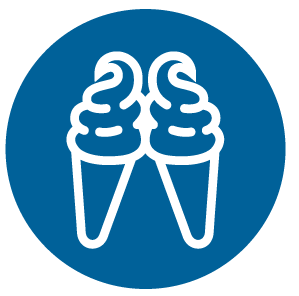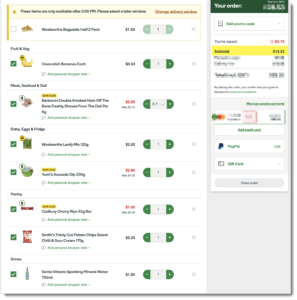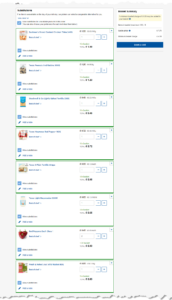Working with models
Positive model experiences are not only at the center of the abbywinters.com ethos, but are also instrumental to the company’s continuing success and ability to keep on existing.
Treating people well is part of our human friendly porn ethos. It’s the right thing to do.
Happy models are returning models, who feel comfortable working their way through the different Posing Levels and Shoot Types with us – meaning more paid work for everyone.
Models who have good experiences recommend us to their friends, one of our main sources of new models.
Models who are well prepared on what to expect in advance of a shoot day, then arrive on set to find that events unfold as described will be more relaxed and are better able to engage creatively in the shooting process.
Engaged models leads to easier shoot days for SPs (who do not need to “carry the creative load” alone) and in better content for customers. Better content for customers ensures the company has the money to keep producing more shoots!
SPs are aware of a models’ expectations going into a shoot day so that they can meet those expectations (and so the SP can manage unreasonable expectations (eg, the shoot will be complete in two hours).
From the Owner of abbywinters.com
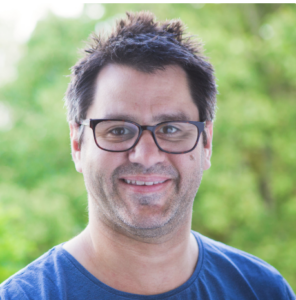
“Every month I work on the FAQ’s on our model recruitment site modelfor.abbywinters.com, and our info site for existing models, models.abbywinters.com. Almost all the info in these FAQ’s is relevant to you as a Shoot Producer as well – we often make commitments regarding what will occur on Shoot days, and the time leading up to them.
If there are new requirements, we’ll let you know by email, but mostly it’s refining our existing requirements, and explaining them to models better.
For example, we do check-in calls with models after they appear in a shoot, and lately we have gotten feedback that models did not know the shoot was going to be like that!
So, I made a new FAQ, What am I actually expected to DO in my Solo shoot? In it, I provide context in model-facing language on the main Solo shoot assessment areas (“Adopt a tease-and-payoff approach”, “Clothing USE”, and so on). As this relates directly to what Shoot Producers do on a shoot, you should check this out.
Feedback on improvements are always welcome.”
Garion Hall.
The Model Liaison team has worked hard to get a first-time model to be ready for a shoot – around seven hours of work spanning several weeks (for a model who has already appeared in a shoot, it’s around four hours).
How information is presented to first-time-AW models
A prospective model applies to work with us on modelfor.abbywinters.com. We qualify their application by email, a voice call, and some interactive questionnaires. Successful applicants are approved by the Creative Director, and moved to the Shoot Booking process. ✅
There are a lot of nuanced requirements we have from models, so we first have a voice conversation with her about the Shoot Type and our expectations from her. Then, the Model Liaison asks a series of open-ended questions of the model, about her grooming, her clothing, and other key elements that relate to the shoot from the model’s perspective.
For first-time models, this call is around 40 minutes long. The more shoots a model appears in, the shorter this call can be (for very advanced models, it can even be done by email), but around 20 minutes is the shortest.
After the Shoot Booking call, the model is sent a booking confirmation email (as the Shoot Producer, you’re BCC’d on this), which recaps the high points of the phone conversation, and has many links to our for-models site https://models.abbywinters.com/, with resources for models in working with us (an example FAQ answer, What happens when I arrive for my shoot?).
In all our communications with models, we work to “frontload” them with information so they can make informed decisions. When a model arrives for a shoot, she’s aware of all our requirements (for example, grooming and the grooming check, clothing, shoot context, Posing Level, payment).
We follow this exact same procedure for every single model we work with, and your team has your back! Don’t waver if a model claims they were “never told” something. 💪
When you’re offered a shoot with a model via this method, here’s the process to follow.
Consider if you’d like to make a shoot of this model
Estimate: 10 minutes.
A Shoot Producer can reject working with any model at their discretion. Before doing any more work on preparing to make a shoot of this model, consider if feel confident that you can make a 3-assessed shoot (at least) of her.
If you’d prefer not to make a shoot of this model for any reason 🙅♀️, let the Model Liaison know if it’s a “not right now”, or “not ever” situation for you – they will let the model know you’re unavailable, and find an alternative Shoot Producer to work with her. It’s no problem.
The model’s MDB record has all the information we know about this model. While some of the data will not be relevant to a Shoot Producer, there is plenty that is. Consider the following items before making a decision.
Model Assessment 💯
[top panel] All models are assessed on their suitability for the AW site, out of 5.
5: This model is the highest priority to be shot. Rare and valuable – top 5% of models
4: This model is a high priority to be shot. Top 25% of models
3: This model is suitable to be shot. Most models.
2: It’s very rare a 2-assessed model would be shot, only if we have no alternatives.
1: We never shoot 1-assessed models.
The more valuable a model is to the business, the sooner we’d like her to be shot, and we may be willing to make compromises to have her shoot created sooner. Consult the CD as necessary.
Images (Test Shots) 🖼️
Look for tattoos that may need to be hidden – the Tattoos field on the Bio Info tab has a definitive list of what the tattoos are, size and placement. If this model has appeared in shoots for us before (check the Shoot Log tab), their shoots on the AW site might also be useful.
Check for notes from the CD (flagged as “important”, showing in yellow background) for “Tattoos may be shown in this shoot” – though this is rare.
If not, standard practice is that all tattoos must be completely hidden for all media captured of this model.
Last few weeks of notes 📝
[Notes tab] Look for the note that begins the booking process for this shoot, then read up from there to understand the issues the ML dealt with. Some may affect your planned shoot, though most often this will be standard booking stuff.
All notes flagged as “important” 📑
[Notes tab] Scroll through all the notes and look for Important-flagged notes (that is, notes highlit in yellow). These are notes people in the organisation have identified as being very important to other people (often, to Shoot Producers).
Shoot at home 🏠
This is only relevant if you and the model are geographically close, of course. It’s always a priority to make a shoot of a model in her (actual) own home, and she is paid a fee for allowing it.
[Notes tab] On the Notes tab, search (Ctrl-f / Cmd-f for MacOS) for the phrase “shooting at their home.” This note is added by the “MDB Questionnaires” user, the computer program that asks models questions in a questionnaire format before their first shoot. The model’s response is recorded in the same note.
If the model indicates shooting at their home is possible, we need to check if her home is suitable for a shoot – it may not be. See What are the considerations for shooting models at their own home? FAQ for more info.
Address 🗺️
[Contact Info tab] Ascertain where the model is coming from. The ML team will provide info on flights if the model is not local to you.
Availability 📅
[Posing Info tab] For models for whom this is their first shoot, this information is fresh, added in the last few weeks most likely. For other models, this may be out of date, but is a good starting point for a phone conversation you’ll have with the model to organise a shoot date.
Occupation 🕴️
[Contact Info tab] Can be useful for ideas for the shoot. Yoga instructor, for example…
Model info ⛹️♀️
[Bio Info tab] Most of this information will be relevant to planning a shoot. Info here can set some seeds growing (especially Fitness and Flexibility, Hobbies and Props).
Safety Information 🧯
[Interview Notes]
Check her medical conditions, medications, and allergies. Usually there’s nothing to worry about, but if the model has a cat allergy and the likely shoot location might be a cat owner’s home, well, it’s good to know that early on, right?
Questionnaire responses 🤔
[Questionnaire responses] Models are asked to complete questionnaires before girl-girl, Girl-boy and Intimate Moments shoots. Info here is essential to know when planning those shoots. Let the Model Liaison team know if any responses are missing.
Subscribe to this model in the MDB
Estimate: 1 minute.
When you subscribe to a model in the MDB, you’ll get an email as soon as someone updates their MDB record. Often this will be useful information – when their flight arrives, or how their grooming is progressing.
After the shoot occurs, there are many other MDB updates that are not relevant to you, so you may wish to unsubscribe from their MDB record to avoid this annoyance.

Check your own availability
Estimate: 5 minutes.
In the upcoming call, you’ll discuss with the model a suitable date for the shoot that suits her and you, so check what other commitments you have before this call, so a meaningful discussion can be had about dates.
However, don’t delay making this call because you’re waiting for confirmation on some other job – models feel more comfortable and engaged in the process when they hear from SP’s well in advance of their shoot.
Contact model: Intro self; discuss props; set date / time / place
Estimate: 20 minutes.
The Model Liaison has sent an introductory email to the Shoot Producer and model, and has “primed” the model to expect a call from the Shoot Producer soon after that email is sent. Engaging the model as soon as possible (while the booking call is still fresh in her mind) is valuable.
We strongly recommend making a voice call with the model at this stage (as opposed to email, SMS, WhatsApp, Telegram, or similar). Models are concerned about visiting someone they know little about and working with them in a sexualised context.
A voice call can reduce a model’s concerns, and establishing a relationship contributes to the model bringing things that will make the shoot better (props, clothes) and being mentally prepared.
Intro self
Models may have checked your Bio page on People… but they also may not have. So, prepare a concise overview. For example,
Hey Mary! I’m Barry, I work with abbywinters.com! Model Liaison Jane introduced us by email yesterday, I’m your Shoot Producer in Rome, Italy for your upcoming Solo shoot. I’ve produced a few dozen shoots with the folks at AW, and I am particularly excited about yours because you’re a yogi! We have a few things to discuss…
Discuss props
Props can make a good shoot excellent (and a poor shoot good) and are especially useful in videos. It’s best not to lead a model (by asking, for example, “Do you skateboard?”). Instead, we recommend asking open-ended questions to engage the model. Some example questions include:
- What do you do in your spare time?
- What are your hobbies?
- What do you do for exercise?
- What personal grooming items do you regularly use?
- Tell me about your favorite styling accessories?
- How long have you had a diary for?
From this, ideas for props should coalesce.
Discuss date, time and place for shoot
If this is the first shoot a model is doing with us, her Availability info on the Posing Info tab in her MDB record will likely be up-to-date with relevant info (though it should still be confirmed). If not, this needs to be discussed from scratch with the model.
Considerations include:
Date
Shooting sooner is always preferred by the company, but is often not possible, due to her commitments, grooming issues, or just her personal preferences (plus, your own availability).
Seek a date that will suit you both. We have told the model that a Solo shoot takes a full 9 hours, but you should mention that again (don’t under-estimate it!).
Time
We recommend a start time of 9am on the shoot day, but that’s at your discretion. Models are told to allow 9 hours for a Solo, GG, or DIM-SIM day shoot (5 hours for a SIM if only she is on-set). These are deliberate over-estimations, to ensure models do not make plans that cause them to leave set early (very disruptive!).
Place
Unless the model is to be shot at her own home, at this stage, the specific shoot location does not need to be known – but models will always prefer an indication (for example, “I’ll organise an AirBNB” / “My lounge room is ideal for this shoot” / “My friend has a great backyard” / whatever).
Establish the best way to connect in the future
Ask the model for her preference for future communications from you.
You’re seeking the method she’s most likely to respond to the soonest. Your personal preferences are relevant too, but we need models more than they need us, so we need to acquiesce to their preferences sometimes!
Discuss what happens from here
The model has been informed of the process from the Model Liaison, but the more people who reinforce it, the more likely the model is to remember it, and act in our favour!
Depending on your relationship with the model so far, it can be useful to ask the model what she understands will happen now (with you correcting her as necessary). The more the model says the things we want her to do in her own words, the more likely she is to do them!
The key items are:
- Model Liaisons will be in contact 4w, 2w, 1w, and 3d before the shoot for grooming images. Please respond promptly (they’ll let me know what’s up)
- I’ll be in contact a few days before the shoot to confirm the date, time, place, props and clothes
- Message me if anything changes or you have questions about the shoot itself
Ask if she has any questions
The best phrase is the presumptive,
What questions do you have for me?
This infers she does have questions, and is more likely to “rattle loose” some useful questions.
It’s possible the model will ask questions you’re not qualified to answer (for example, about their flights, or payment timing). Tell the model to consult the Model Liaison. Otherwise, answer her questions.
If she has weird / unusual questions that seem “off”, email the Shoot Producer Trainer and the Creative Director, as they are always interesting and may indicate a problem somewhere in our processes.
Update MDB
Estimate: 5 minutes
Any time anyone connects with a model, the MDB must be updated. This helps others in the organisation know what is going on.
The key info that must be recorded at this stage is about props, date, and place. An example note:
Connected with model on a voice call. Plays hockey, asked her to bring gear and uniform. We settled on March 23 for the shoot. As she is flying in, I will book an AirBNB where she will stay, and we’ll shoot there as well. We agreed to use SMS to communicate from here on in.
When adding notes, make them professional, brief and in English. If an opinion is called for, offer your professional (never personal) opinion, keep it objective and fact-based (for example, “I found Mary difficult to communicate with on the phone.😐 ” is good, but “Mary was a rude bitch 😠” is not acceptable). abbywinters.com BV is subject to EU data privacy laws, where people can request to see the information companies hold about them, and we must supply it. Let’s not embarrass ourselves. 😳
Each note has checkboxes that can be added – at least one must be selected, typically two in this situation;
[x] We attempted to contact her
[ ] She attempted to contact us
[x] She communicated with the right person
[ ] Admin note

Update Model Liaison
Estimate: 5 minutes
Model Liaisons deal with dozens of models every day, and they may not see your MDB update for a week or more.
Reply to the Model Liaison’s intro email (but don’t include the model) and let them know the likely date – they will add this to the company Shoots calendar, invite you, and start the grooming check-in process with the model based on that date.
Source location
Estimate: 30 minutes.
Based on the AW Shoot training for Location and Environment and our Location Allowance policy, source an appropriate location.
Inform model and ML of accommodation details, if applicable
Estimate: 5 minutes
If the model is travelling for the shoot and staying overnight, she needs to know where she is staying.
Model accom if SP sourcing separate shooting location
If the Shoot Producer is organising a location for the shoot that is not suitable for the model to stay overnight in (for example, shooting outside, or at a friend of the Shoot Producer’s home), the model will need to be accommodated in the Shoot City. The Model Liaison will organise a hotel for the model – this is never appropriate to make a shoot it. The Shoot Producer is expected to help the model find the hotel with supportive SMS / phone calls.
The Company will contribute to the costs of the Shoot Location in some circumstances – more info in the Location Allowance policy document.
Model accom if SP will make shoot in the model accom
If the model will be shot in the same place she’s staying (we call this “Accommodation and Shoot Location”), the Shoot producer is responsible for organising a suitable place – more info in the Location Allowance policy that has been shared with Shoot Producers via Google Docs. Let the model know the address, check-in info, and CC the Model Liaison. This info must be sent to the model at least four days before she arrives in the Shoot City.
Support the model
Provide info on how the model is to get from her Shoot City transport hub (that is, the airport or central train station) to the accommodation. An example message showing the expected level of detail, tips and tone;
You’ve got the Amsterdam Shoot City Guide from the Model Liaison team already. Following on from that;
When you arrive at Amsterdam Centraal train station exit to the south-west, to Stationsplein (if you see busses or a huge river, you’ve exited on the wrong side) and follow the signs to Tram 14. They run every 20 minutes or so. Please SMS me when the tram departs (on 06 1529 8159). After a bit of city travel, you’ll be travelling along Wibautstraat, a local shopping street in an inner suburb. get off at Stop 38, at the corner of Marcusstraat – you can ask the tram conductor to let you know when that’s coming up, or use Google maps to track your progress. It’s about a 15 minute tram ride from Amsterdam Centraal train station. There’s a tram stop every few blocks, so it’s no problem to get off at the stop after and backtrack a bit.
When you get off the tram, walk in the same direction the tram was going, it should take you less than a minute to get to the street Tegelweg on your left. Look for number 151 (note that in the Netherlands, each apartment has its own street number – cool, huh?). Check it out on Google street view, so you know what to look for. That’s where I’ll meet you, out the front on the street!
We’ll go in to the apartment together and get you settled, I’ll answer any questions you have so far. As I leave, I’ll walk you to the local supermarket, about 8 minutes’ walk away, so you know where that is. As you know, we’re make your shoots at your accommodation. I’ll be back at 9am the day after for the first shoot!
Let me know if you have any questions so far, otherwise I’ll wait for your SMS when your tram departs – I’ll be tracking your flight’s landing time as well, but an SMS when you clear customs at the airport would be helpful as well.
A reminder to make sure your phone is unlocked to work in the Netherlands / Europe – it’s worth double-checking that as it’s a common problem models face when they travel to us. To be safe, you might want to print out this info? In the worst case, you can ask anyone you meet to send an SMS to me – pretty everyone speaks English and is pretty friendly, and if you explain that you just arrived and your phone does not work as you expected, they’ll be happy to help. Once we meet up, I can help you get a local prepaid SIM, or you can use my phone to call your carrier to ask for help.
Review MDB record / Grooming info
Estimate: 3 minutes, several times over a month.
The Model Liaison will update the model’s MDB record when grooming images are asked for, received, and what their grooming status is. If there are grooming issues, the ML will let you know (and if you subscribed to the model in the MDB, you’ll get updates anyway). If they seem fixable in time, the ML will advise the model on the best ways to fix them.
If the grooming issues do not seem fixable in time for the scheduled shoot, the Model Liaison will contact you and ask you to reschedule with the model.
At any time, your input on dealing with grooming issues is welcome.
Confirm date / time / place / props details a few days before shoot
Estimate: 20 min + notes
A few days before the shoot, communicate with the model using the agreed method, and confirm the date, place, time and props to bring.
Communication is a two-way street, so don’t assume the model has got the message until she actually responds! Try to engage the model in a conversation about what’s she bringing (for example, “Hey, what colour are the rollerskates? I want to make sure I have some complimentary colours in the set dressing!” – this will encourage the model to bring the rollerskates, and be less-likely to “forget” because they are heavy and awkward to bring!).
Update the MDB with a note to say this has occurred.
Ask model about food prefs
Model’s food preferences are recorded in the MDB on the Interview Notes tab, Food Preferences field. See also, How am I expected to provide model lunches? Using the agreed communication method, a few days before the shoot, let the model know;
For lunch, I plan to get [snack description], [main description], [side description], [drink description]. Does that work for you?
Update the Interview Notes tab, Food Preferences field for this model with what you and the model end up agreeing on.
Model Liaison’s confirmation call
A few days before the shoot, the Model Liaison will voice with the model and confirm a bunch of things, including shoot type, Posing Level (and what it means), ID, payment, location, time, date, and her transport method.
The Model Liaison will update the MDB with the results of their call, and email you with a list of the questions asked / answers given.
Make a shoot plan
Making a shoot plan is required for the first few shoots a SP makes with us, and is strongly recommended for subsequent shoots so Shoot producers can Level Up (earn more money from shoots; have more creative freedom).
A template for a Shoot Plan is included in the Shoot Producer Reference Guide emailed (search for the email subject “Shoot producing for abbywinters.com, reference guide”, or ask the Creative Director for a copy).
Shoot Producers are always welcome to run their plan by the Creative Team (CD and Shoot Producer Trainer) for additional ideas. Using the Fetish Finder is also strongly recommended, as are the Posing Level Pose Ideas books for each Posing Level.
Check model in to accommodation
If the Shoot Producer has organised a shooting location that is also serving as the model’s accommodation, the Shoot Producer is responsible for checking the model in to the location. This is for a few reasons;
- We don’t know who the letting agent / location owner are – what if they ask the model for a “check in fee” (in cash) – or sexual favours?
- We don’t know what the model will say to the letting agent / location owner about the nature of her stay – an unguarded comment could cause problems (“Only Solo on the first day, but then the hardcore girl girl shoots after that…” 😬)
The Shoot Producer ideally meets the model at the accommodation/location, at street level (or, at their tram / bus stop or similar), and travels to the accommodation/location with the model, does the checkin process, collects the keys, and enters the accommodation/location with the model.
Alternatively, the Shoot Producer checks into the accommodation/location before the model arrives, perhaps leaving a key in the lock box / sharing the code, or otherwise getting the model the means of access.
However, a in-person is always preferred.
If several models are staying in the same accommodation/location, it’s fine to ask the first model to let the second model in (or, the SP can do it themselves), so long as both models know what the plan is.
Prepare equipment
Charge batteries, clean lenses, format cards – the usual stuff.
if you are renting equipment, we strongly recommend practising with it well before the shoot day, and write down the settings to be used (best to do a “factory reset” before starting to use camera gear, as who knows what weird settings the last renter used?!
See the Shoot planning timeline.
It is essential the model is informed about their accom and shoot location at least 3 days before the first shoot day – not knowing this causes models considerable anxiety.
Overview of model lunches
We commit to models that Shoot Producers will provide each model on-set on a shoot day a modest but filling lunch that meets their dietary needs and personal preferences.
Shoot Producers claim a Lunch Allowance from the company for each lunch they provide to a model in the course of making abbywinters.com shoots.
Model lunches seem simple, but there’s actually some nuance in it! Lunch can have a big impact on a model’s morale (in turn, affecting the quality of the shoot, and their opinion of working with the company again – and referring their friends to us).
In a nutshell, Shoot Producers;
- Understand the importance of model lunches (to models, and to the Company)
- Consult with models about their lunch preferences before the shoot day
- Provide a lunch that meets the model’s needs and the company’s requirements
- Spend within a budget, and make clear reimbursement claims for the Lunch Allowance
This page contains information in these areas;
- The Lunch Allowance is a specific amount
- The Lunch Allowance is only for models
- We set model’s expectations around lunches
- Lunch affects the model’s experience on the shoot
- Models are consulted about their food preferences
- Allergies must be accounted for
- Vegetarians & vegans are treated respectfully
- There are requirements for food provided to models
- Shoot Producers do not “judge” models food preferences
- Lunches provided are cohesive
- Shoot Producers are not caterers
- Shoot Producers can get lunch in several ways
- Empower models with food on set
- The company asks models about their lunch experience
- Shoot Producers are authorised to by “emergency” food
- If a shoot goes long, we supply another meal for the model
- If the shoot is cancelled at the last minute, we still pay the Lunch Allowance
- Shoot Producers claim Lunch Allowances on their invoice
- Assignments
The Lunch Allowance is a specific amount
We do not publish the amount in this FAQ, but each SP has been notified about the amount applicable to them. Let us know if you’re not sure what it is.
The Lunch Allowance is per model, per shoot day. For example;
- One model on a Solo shoot, one Lunch Allowance applies
- Two models making a GGT3 shoot, two Lunch Allowances applies
- Three models making a SIM each and two DIMs (five shoots), three Lunch Allowances apply (one for each model, not one for each shoot)
It is expected that the whole of the Lunch Allowance is used on the model’s lunch – or at least 90%. Should the requirements listed below cost significantly less, consider some extras – sweets, chocolate or nuts, for example.
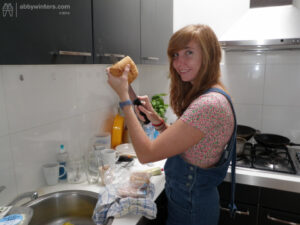
It’s not appropriate for the Shoot Producer to spend significantly less than the Lunch Allowance, and “pocket” the difference or spend it on their own lunch! If the Shoot Producer consistently spends less on a lunch that meets all requirements, notify the Creative Director who will discuss how to move forward.
If Shoot Producer spends more than the Lunch Allowance, the company does not reimburse the Shoot Producer (unless by previous agreement with a PDB number, very rare). These overages come out of the SP’s pocket.
If a SP is unable to provide lunch within the Lunch Allowance (for example, to meet the requirements, they need to spend 150% of the Lunch Allowance), they must discuss the matter with The Collective before the shoot day.
The Lunch Allowance is only for models
The Lunch Allowance is for models working as models in shoots being made that day – not the Shoot Producer, Second Camera Operator, Location Owner, or anyone else.
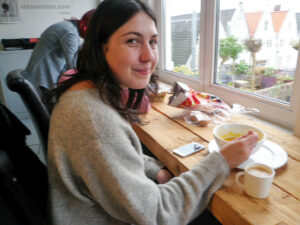
However, on shoot “blocks” (a series of shoots over several days) it’s usually more efficient and convenient to visit a supermarket and buy bulk supplies for model lunches. For example;
Shoot Producer Anna is doing four shoot days this week, a mix of Solo, SIM, DIM and GGT3 shoots. There’s a total of seven model lunches to be supplied.
Adding up the Lunch Allowance for seven lunches makes for a supermarket shop that can get ample food for the models (perhaps also with a “freshness top-up” on day 3).
In that situation, the economy of scale means there’s likely to be enough to feed the SP and SCO as well as the models 😃. However, the models always come first – perhaps on the last day, the SP and SCO need to provide their own lunch.
When an SP bulk-buys food supplies at the start of a block of shoots, they ensure that the quality of lunch on the last day is equivalent to the lunch presented on the first day. SPs need to allow for;
- The freshness of ingredients
- Popular items being eaten sooner than anticipated
- Models unexpectedly not liking something
Every few days, it is probable that SPs will need to visit a shop to purchase ‘top up’ items of food to accompany the remaining items from the initial larger shop.
We set model’s expectations around lunches
During the shoot booking process, we set models’ expectations about what to expect from a lunch on set. If a model requests or demands something not described there, the Shoot Producer will have been consulted (this is very rare). For example;
On a Shoot day, Shoot Producer Kelly is surprised when the model she is working with insists that the Shoot Producer should provide a morning and afternoon take-away coffee.
This does not sound right to Kelly, so she checks with The Collective on WhatsApp. The team makes it clear that the model was not promised any such thing (and in fact, we explicitly say that take-away coffees are not supplied).
In fact, SP Kelly did not even need to ask The Collective – everything we tell models about lunch on set is contained on the Lunch info page for models. Perhaps once a year there is an exception. This will always be recorded in the MDB as an Important Note, the model’s “Food preferences” section will be updated, and the Shoot Producer will be notified by email before the shoot day.
Models are not expecting a 3-course meal from a fancy restaurant, but they are expecting a meal that leaves them feeling full and sated after eating. Models expect their dietary needs and food preferences to be met.
Models expect their meal to be planned-for and cohesive. They do not want to feel like an “afterthought” as they choke back tears eating a raw carrot with mashed potatoes.
Models expect to be able to enjoy their lunch selection without feeling judged or isolated because of their choices.
Lunch affects the model’s experience on the shoot
Feeling hungry and drained is unpleasant. Many models get up earlier than is normal for them to travel to shoots, and most models report feeling exhausted (in a good way!) after a full day of shooting. Therefore, a replenishing and satisfying meal in the middle of the day will impact their mood and performance significantly.
We know that some people are shy or embarrassed about their dietary restrictions. A model presented with a shop-bought sandwich that any “normal” person would like, but which contains an ingredient she does not like (say, cucumber) may feel embarrassed to bring it up or stupid for being so choosey, causing her to feel upset on top of feeling hungry!
When SPs are working with a model across several shoot days, they check in on how the model found that day’s lunch, as this may impact lunch for the following day(s) and models might be too shy / polite to initiate a conversation about it. It might be that a model adores the salad bowl provided and wants that exact same lunch every day… or they may asked for the salad bowl but now discovered they were not a fan of that day’s lunch and want something new. Some models will find comfort in lunches remaining the same, others will want variety.
It is not ok to assume what a model wants to eat on subsequent work days based on her consent from today. Model lunches are a small demonstration of how consent works on set, the same principles that apply bigger things such as Posing Levels should apply to smaller things like lunches as well.
Lunch is also an opportunity to confirm to the model that she is being listened to, and everyone likes to feel remembered. For example;
Shoot Producer Belinda is due to make another shoot of Wendy – it’s been 10 months since their last shoot together. It went well, and both of them are looking forward to working together again.
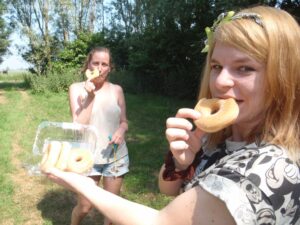
On the last shoot, it came up in conversation that Wendy loves donuts. It was just a passing comment, but Belinda – prompted by the item in the Media and Metadata Ingestion checklist – updated Wendy’s Food preferences in the MDB for the next time Wendy is shot.
10 months later, Shoot Producer Belinda checks Wendy’s food preferences in the MDB while preparing for the shoot. Thinking that the donuts will be a nice surprise for Wendy, she does not ask Wendy about them beforehand – she just grabs some from the supermarket with the rest of the food shopping for that shoot.
Of course, Wendy is delighted to have donuts on-set, and is pleased that the busy and professional Shoot Producer remembered her small preference almost a year later.
What could you do with food on your next shoot, to make the model feel special? (Birthdays are a great opportunity, but other days should present this option as well!)
“I will do anything for a bacon sandwich!”
Model Masie (now Shoot Producer Trainer) recalls her first shoot as a model with abbywinters.com in October 2010.
In subsequent shoots, while the Shoot Producers would always ask for lunch preferences, certain staples often appeared for me.
- Hummus and tortilla chips
- Huge bucket salads
- The best one being the blue cheese and pear salad, and the SP always took one for herself. I always felt special having the same lunch as the SP, as they were really cool! 😍
- A particular brand of chocolate biscuits with little houses printed on the front.
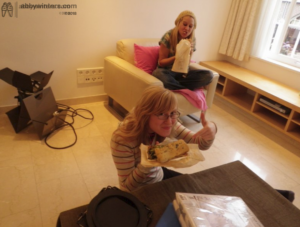
The above lunch became synonymous with the abbywinters.com shoot day experience for me. Existing models would tell new models about the chips and hummus that we always got, and long after the SPs who started that tradition had left the company, models would ask for this exact lunch and were a little disappointed when something different was provided.
The above food items were nothing special – in fact they were easy basics from the local supermarket that was next to the company’s office – but they became special, they were part of the experience. A good lunch can add to a model’s experience of a shoot day.
When I was a jobbing model, I would literally recommend working with companies based on how good the lunch was – Playboy had a whole buffet room, and ATK’s photographer would hand you the budget at the door of a local supermarket and encourage you to indulge!
Working with fussy eaters
We’ve all experienced not getting the lunch we wanted when we are tired, and can appreciate how it can be more upsetting in an environment with new people and potentially new and intense experiences. The impact of a poor lunch experience will hit a lot harder than it would when alone at home. When presented with a meal they don’t like, they may feel upset, rejected and possibly even foolish or of low self-worth.
“Fussy eaters” can be embarrassed about their diet restrictions and can find their diet to be isolating and emotional to navigate.
For example;
Three models are on set for an Intimate Moment shoot day. The SP picks up lunch from a local deli they are familiar with on their way to set. On arrival, the SP tells the models about how these are the best sandwiches in town and how much they are going to love them! The SP also managed to get four of their special cookies. These treats are baked fresh every morning and sell out really quickly. Lunch will be the best part of the day! The models are a little excited for this amazing lunch.
But, uh-oh! Unfortunately the SP didn’t check the models food preferences first. 😕
Two of the models begin lunch and enthusiastically discuss how amazing the sandwiches indeed are. The third model doesn’t like the mayonnaise that has been generously applied. And, the special cookies the SP purchased have some nuts in them, and this model doesn’t like nuts.
This model is now hungry and isolated from the rest of the room. The model feels excluded from the conversation because they can’t eat the food. She does not want to be a “bother” to the busy Shoot Producer, so they lie about not being hungry today – and anyway, she’d prefer to keep her unusual food preferences private from the other models.
This is likely to affect her shoot performance for the rest of the day, and probably causing her to not want to work with this Shoot Producer – or possibly even with the company – again. And, less likely to refer her friends.
The SP in this situation tried to do a nice thing but instead made one of the models feel vulnerable and singled out – and hungry! Always speak to models about their lunch needs before purchasing, never assume.
Models are consulted about their food preferences
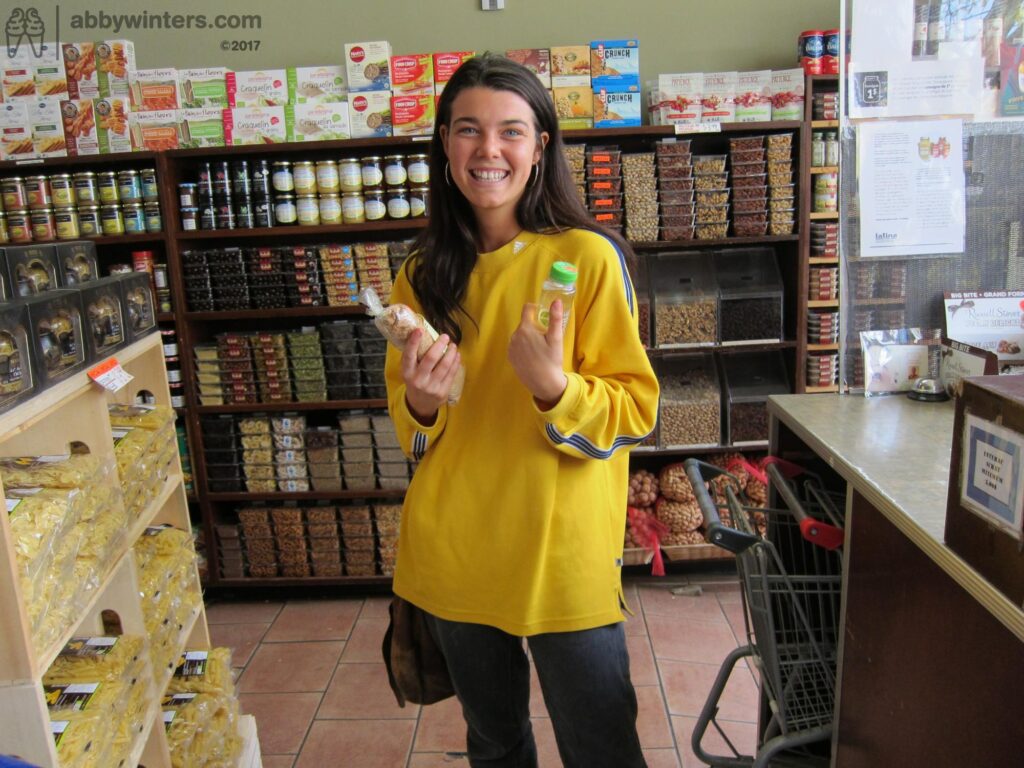
Tastes vary between people and culturally, and the lunch provided must be one the model actually wants to eat. Individual model dietary needs must always be accommodated for. Some models may have ethical or lifestyle preferences (eg, vegetarian, low carb, raw diet), or – like us all – some models just dislike some foods.
For example;
Shoot Producer Sven buys the same lunch he bought for a model last week, a box of chocolate biscuits and a bottle of full-strength Coke. She loved it, so he’s sure it’ll be a hit with new model Angela as well.
But model Angela is really into healthy eating and clean living, and was expecting a salad and a piece of seasonal fruit for lunch. She’s a little offended Sven would provide such poor quality food, as well.
Whatever happens next is going to be time-consuming and will affect the mood of the day if not handled carefully (not to mention, wasteful!).
Of course, the inverse also applies;
Thinking that most young women are health conscious, and based on some recent models’ positive reactions to the lentil salads she’s been buying, Shoot Producer Julie leans-in and buys a vegan salad and some related items for new model Stephanie.
Stephanie is making the most of her youthful metabolism by living on cake, so she is fueled by sugar (oh, to be young again!). She will not respond well to the healthy lunch that Julie bought (she does not need a healthy diet “intervention” from the SP, she knows what she is doing and would like a lunch that leaves her feeling satisfied – not judged!).
We gather basic info about each model’s food preferences as part of onboarding them into our company, stored in the MDB.
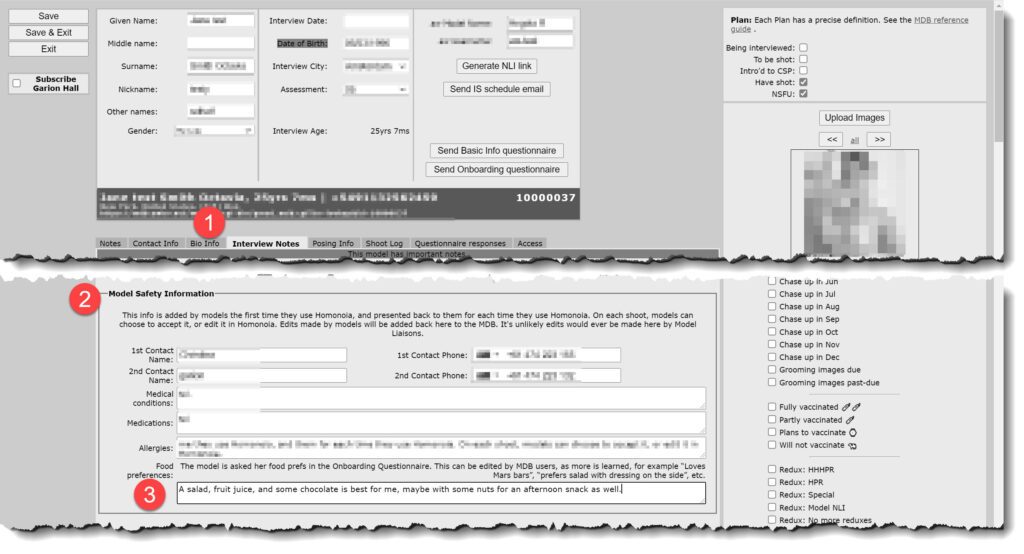
To ensure an appropriate lunch is provided, SPs engage with models before the shoot day to find out what models like (and don’t like) in more detail. The SP suggests what they plan to provide for lunch, based on the model’s preferences recorded in the MDB and what’s available, and the model shares her feelings on that.
The Shoot Producer is not expected to be a Deliveroo driver, a chef, or a servant. While reasonable requests from the model should be considered, it’s ok to reject demands for specifics (for example, the model wants McDonalds, and the nearest one is 8km / 5mi away, there’s not enough time to do that).
After the shoot, as part of the Media and Metadata Ingestion process, Shoot Producers consider if the Food Preferences field in the MDB needs to be updated with new learnings, to help other SP’s (and themselves) in the future when working with this model.
Allergies must be accounted for
Allergies information is stored in the models MDB record, however SPs always ask first-time models if they have any allergies (including food allergies) ahead of a shoot day, in case anything is missing from the models notes (if there is, the SP updates the notes in the MDB record to be sure).
Models who have severe allergies may require that not only her meal avoids certain ingredients but also that of her shoot partner (in the case of GGT3 shoots) – or indeed anyone at the location if the allergy is really severe.
We always take allergies seriously, as they could literally be a life or death situation.
Vegetarians & vegans are treated respectfully

Vegans and Vegetarians are often presented with side dishes or an incomplete meal by people who do not follow the diet themselves, the assumption being that vegetables are what these people eat and little else.
In fact, it is possible to be a Vegetarian or even a Vegan and not enjoy vegetables or even healthy foods! Like people with no food restrictions, Vegans and Vegetarians appreciate variety and texture in a meal.
There are requirements for food provided to models
Lunch supplied must meet the model’s dietary needs, considering their allergies, diet requirements, and general preferences.
A model lunch consists of several components;
- Main item
- Side dish
- Snack
- Drink
While the exact contents of each model lunch will be different depending on their personal tastes and needs, the structure of the lunch should always be the same.
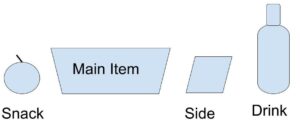
Each component must be un-expired, and fresh food must be actually fresh.
When it’s not necessary to provide all four components
Providing the four components is required in all situations, unless one of the exceptions occur;
- The model expressly says they do not want something (eg, “I’ll bring my own drink bottle, and refill it with water, so no other drinks for me”)
- The model says she’s bringing her own main / side / snack
- It’s a shoot event (eg, 10+ models) and we have organised formal catering
Main items examples
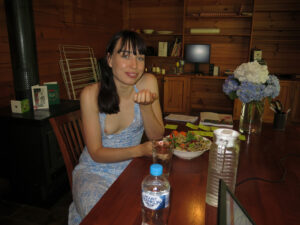
Some examples of Main lunch items include;
- Large sandwich or wrap
- Shop-bought, or put together using ingredients on set
- Large salad
- Shop-bought or put together using supermarket ingredients on set
- Must contain more than just lettuce, must be a meal-based; eg have a meat / fish / cheese element supported with multiple vegetables, dressing etc
- Pasta or rice
- Shop-bought, or cooked on set
- Pizza
- Soup and bread
Sides item examples
Some examples of suitable Sides items include;
- Crisps
- Hummus and tortilla chips
- Fruit salad
- Bread roll
- Corn on the cob
- Small couscous pot
Snack item examples
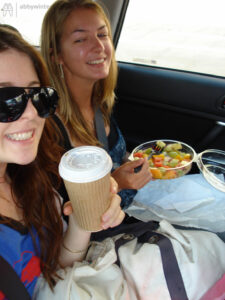
Some examples of suitable snacks include;
- Fruit
- Biscuits / cookies
- Chocolate
- Yogurt
- Lollies / sweets/ candies
- Ice creams / mini ice lollies / icy pole
While snacks can be consumed at lunch time, they are available to models throughout the shoot day, and intended for models to “graze” on as they choose (this grazing can always be incorporated into the shoot being created, at the very least, Backstage images).
Drink item examples
Some examples of suitable drinks include;
- Tea / Coffee (not take-away)
- Fruit juice
- Bottled drink
- Fizzy water
If a model says she only drinks water and the tap water at the location is of drinking quality, it is ok to not purchase a separate drink – but models must be consulted.
Shoot Producers do not “judge” models food preferences
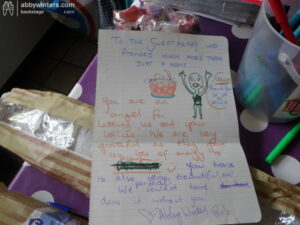
Shoot Producers never pass negative judgements on a model’s food choices. We are an inclusive company and do not judge others, even when their approaches do not align with our own personal opinions. For example, it’s never appropriate to make some comments;
❌ “You know an animal died for you to eat that! It always makes me feel a bit ill watching people eat animal flesh…”
❌ “I’d go crazy if all I ate was healthy food all the time. Don’t you ever have food for the pleasure of it? Won’t you eat some cake?”
❌ “How can you put that crap in your body? You know that there is no nutritional value in that! Just wait till you are 30 then that food will attack your body and you will put on weight and get indigestion if you keep eating only junk!”
Positive comments are always fine, for example;
✔️ “That sandwich you have just made looks like it was made by a chef – that looks delicious!”
✔️ “What lovely weather we are having at the moment!”
Perhaps like your grandma said, if you have nothing nice to say, say nothing.
Lunches provided are cohesive
Buying several different meal elements for models to pick between and mix and match on their plate can be a great way to ensure models get the exact meal they want (plus, preparing food together is a nice thing to do). However models must be given all the ingredients they need to make a satisfying meal – not just some random ingredients! For example;
❌ Bread, Cheese, Ham, Lettuce
The above is the start of a good sandwich for sure, but there needs to be something to “lubricate” and flavour the food. Some ideas include;
- Mayonnaise / butter
- Salad / ranch dressing
- Chutney / pickle
- Salt, pepper, paprika
Consider this example;
❌ Pasta, eggs, corn on the cob, tomatoes and rice cakes.
This list of food contains items that are all great for part of a model’s lunch, but they do not form a logical meal when combined together – even if the model had access to a kitchen to cook with some of the ingredients!
Consider a third example;
❌ Cherry tomatoes, whole grain bread, cookies, bananas, corn cobs.
The model has several things that would be good to snack on, but nothing that would make up a Main Meal item (and this list lacks the elements needed to make a satisfying and filling sandwich).
Finally, consider this example;
✔️ Tortilla wraps, humus, lettuce, roast chicken, mayonnaise, tortilla chips, mixed nuts with raisins, sparkling water.
This is a good meal, touching all the required components and meeting the model’s preferences – and on-budget! Below, the shopping baskets for this meal from a UK and Australian supermarket.
Shoot Producers are not caterers
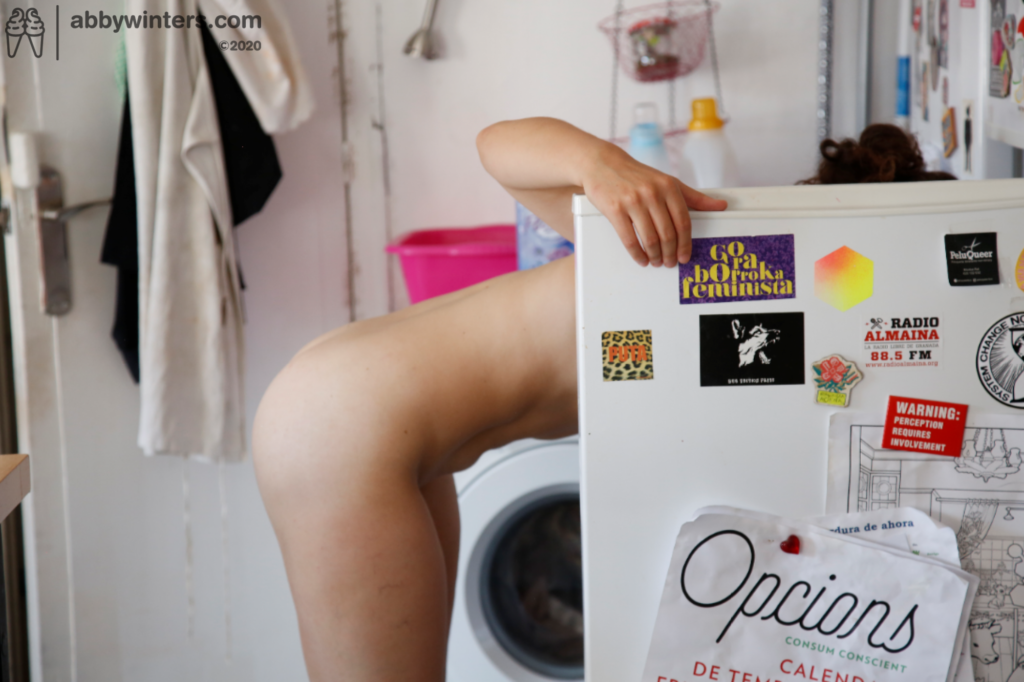
Shoot Producers are not expected to create elaborate meals for models. Instead, they facilitate a cohesive and filling lunch. For example,
Shoot Producer Andrew visited a supermarket on the morning of the shoot, to buy a bunch of suitable ingredients for the two shoot days he’s working with model Stephanie.
The Stills component is complete, Andrew announces it’s lunch time. Stephanie checks the groceries on the kitchen table, then describes her sandwich order to Andrew.
She expects Andrew to make it for her!
Of course, that’s not how it works, and we set that expectation for models in the shoot booking process.
Shoot Producers can get lunch in several ways
Shoot Producers take whatever approach to sourcing model lunches best suits them (or a combination of options). Some options include…
Pre-made food from a shop
Almost all modern supermarkets have a section for food “on the go”, with items like premade wraps, sandwiches, salads etc. These are generally fresh and reasonably priced, and very suitable for lunches on our shoots.
Buying from a sandwich shop is another possibility – a local shop, or a chain like Subway.
Taking the model out for lunch to a local sandwich shop or restaurant (eat-in or take-away) is always fine (these excursions are excellent opportunities for Backstage, too!).
Shoot Producer Ursula in Barcelona often takes models for lunch at a local restaurant – much of Barcelona is medium-density housing, where there are four floors of apartments above ground-floor shops. Almost every block has a local restaurant with a range of fresh food options. A hot meal in winter – even in temperate Barcelona – is always appreciated!
One glass of wine or beer is acceptable with lunch, but no more (if it fits in the budget – the model may choose to pay for her own, if not). See Can I have a drink (or, some other “pick me up”) for courage on the shoot day? For more context.
Collect ingredients to make food on-set
Collect simple raw ingredients from a supermarket, from which models can construct their own sandwiches / wraps.
This works well when there are multiple models on set, with the meal becoming an interactive picnic.
It’s always best to use this approach if there are several shoot days in a row, as there is a large economy of scale meaning a better lunch for everyone within the Lunch Allowance amount.
Make food at home for lunch
If they enjoy cooking, SPs are welcome to cook for the model, but this is never required. For example, baking cookies the day before.
Taking the time to prepare food for someone, even simple food like a boiled egg, suggests that the person doing the cooking cares. Some models refer to Shoot Producer Guilia (Amsterdam) as their on-set mother, as she often cooks for the models at lunch time. The models always comment favorably on how this made them feel cared for, and how they look forward to working with her.
Of course, as always, the SP confirms with the model before the shoot day that they will enjoy the planned meal (once, an SP cooked an elaborate meal only for the model to admit in her post-shoot check-in call that she didn’t like the style of food, did not want to offend the Shoot Producer’s work, and it was really awkward and she went hungry!).
Get food delivered
Using Deliveroo / UberEats (or similar service) is fine, but SPs need to factor in that this might be more expensive due to the delivery component (plus a tip for the deliverer!).
When using a food delivery service, the Lunch Allowance must still allow for the model to get the four required components (Main Item, Snack, Side and Drink), despite the additional delivery cost that will come on top of the food items themselves.
Empower models with food on set

Shoot Producers show models where the food and drinks are at the start of the day, and invite models to help themselves. Models never need to ask permission to have a drink of water or grab some nuts.
When outlining the shoot day plan, Shoot Producers inform models of when the planned lunch break is, but also asks models their opinion on that plan, and invites models to speak up if they need to stop for a meal sooner.
Small things like this help keep the right “power-balance” between models and Shoot Producers on set.
The company asks models about their lunch experience
We make a check-in call after some shoots, to discuss the model’s experience. We provide a copy of the report to the Shoot Producer. In the check-in call, we ask questions about the model’s lunch experience.
Shoot Producers are pre-authorised to by “emergency” food
If something happens and food is needed urgently, but it’s over the Lunch Allowance, Shoot Producers are authorised to spend reasonable amounts to ensure models are fed appropriately. For example;
- The SP had already spent the full Lunch Allowance on lunch, but the water supply to the apartment is switched off unexpectedly, so the SP buys a few 1-litre bottles of water to ensure everyone is hydrated. No worries, company will reimburse.
- Lunch was put into the fridge on the morning of the shoot, but when it came to lunch time at 1pm, we find the fridge was not working and the lunch is warm and distasteful! The SP has to buy lunch all over again. No worries, company will reimburse.
- A model on set is diabetic and is having a “sugar low” (she’s hypoglycemic), so the SP heads out to buy some additional fruit juice and cookies for the model, putting them over the Lunch Allowance. No worries, company will reimburse.
- Compassionate grounds – the model just started on her period, broke up with her partner, or is just feeling low – an emergency ice cream might help a little?
- Event based; it’s a model’s birthday on the shoot day. A small cake is sure to be appreciated, and makes for great Backstage pics. No worries, company will reimburse.
In these cases, the SP emails HQ with a brief explanation of what happened. They are provided with a PDB Number to use on their invoice and charge the Lunch Allowance plus the extra costs incurred.
If a shoot goes long, we supply another meal for the model
While a shoot should never run longer than 10 hours, if it does the Shoot Producer is authorised to purchase another meal for the model (a delivered pizza, for example). Similarly, if the shoot is spread over two days, a second Lunch Allowance can be charged.
In these cases, the SP emails HQ with a brief explanation of what happened. They are provided with a PDB Number to use on their invoice and charge the additional Lunch (meal) Allowance.
If the shoot is cancelled at the last minute, we still pay the Lunch Allowance
If the shoot is cancelled at the last minute (that is, the morning of the shoot day) and lunch has already been purchased, it’s appropriate to charge the Lunch Allowance, even if the shoot did not occur.
In this case, the food should be offered to the model to take home / back to their accommodation so it does not go to waste. If there are multiple models on set, and only one model is leaving set early, work to portion out their lunch if possible.
As always when something unusual happens, the SP emails HQ with a brief explanation of what happened. They are provided with a PDB Number to use on their invoice and charge the Lunch Allowance as normal (but no PPCMS ID can be provided, which is ok – the PDB Number will provide the context needed).
Shoot Producers claim Lunch Allowances on their invoice
When Shoot Producers invoice the company each month (more info), the Lunch Allowance is listed as a separate line item on their invoice, on a per-shoot basis like this:
| [PPCMS ID] [Shoot name and type] Lunch(es) | €[amount] |
|---|---|
| 36562 Maya B Solo Lunch | €10 |
| 38580 Adelina & Francisca GGT3 Lunches | €20 |
| 39311 Jill & Jack GBT3 Lunches (two shoot days) | €40 |
Each lunch line item should be listed beside the other charges (ie, shoot fees) for this shoot (not shown in the example above).
Supporting receipts are not required to be provided for the Lunch Allowance, if the lunch provided meets the requirements listed on this page.
Assignments
If you have been asked to complete assignments relating to model lunches, here are the details.
Assignment 1: Make a shopping basket screenshot
Ask your Trainer to confirm what amount the Lunch Allowance is in your area, if you do not know already.
Using the online ordering system from a local supermarket, make a selection of items that meet our requirements. Assume the model has no dietary limitations or allergies.
Switch to English if that’s an option. Make a screenshot showing images and names of the items, and the total cost.
Do this once for a single model shoot day, and again for a three day shoot block (that is, three shoots of the same model).
Submit the screenshots to your Trainer, and link to this FAQ page.
Assignment 2: Assess some lunches
Download this zip of backstage lunch images. Make a new doc, add each image, and analyse the food that seems to be available to the models.
Does it meet the requirements? If not, what is missing?
Shoot Producers plan carefully to ensure there is enough time in a shoot day to make a full shoot, including a “safety allowance” (we recommend 90 minutes) in case there are issues.
The company will only pay the Shoot Producer for a complete shoot (that is, a shoot that meets the assessment criteria for the given Shoot Type), so if a complete shoot cannot be made (for example, the model has to leave at 6pm, and the shoot can only start at 4pm), the shoot should not be begun. The Shoot Producer knows their typical time to make a shoot of that type.
“Rushing” a shoot (for example, trying to “squeeze in” a seven hour shoot to five available hours) is never worth it – the shoot quality is always compromised. There are many low quality shoots in the world, but our customers are paying us for high quality shoots (so that’s what we pay Shoot Producers for).
It may be possible to shoot the Stills today, and the Video tomorrow. But, perhaps the model’s flights need to be changed, and their accom extended for an additional night? That has cost implications, so always consult the Collective on WhatsApp.
Consider that some things could be done later, for example, Homonoia in the car, after the location owner comes back to their home (or even, on the way to the airport).
Being on time is respectful. Being ready 15 minutes early is better.
If being late is unavoidable, let the model know as soon as you know you’re going to be late – not at the time you’re supposed to be arriving!
Being serially late can cause a model to lose respect for your leadership, choose not to want to shoot with you, and tell her friends her opinion of you. It should be avoided at all costs.
The shoot setting is where models will be getting naked, sharing intimate aspects of themselves, and perhaps masturbating… and they are also a workplace, a lunch-room, and a changing room!
Everyone works better when they understand the context of the work, in this case, understanding where the shoot will actually happen, and what spaces have been set aside for different things.
When the model arrives for the shoot day, indicate where they should spread out their clothes, leave their bags, go to the toilet, get changed, and make a cup of tea (some people may not feel comfortable exploring and finding these things on their own – in some cultures, wandering around someone else’s house – even a rented one – is considered rude!).
Most abbywinters.com shoots benefit from not being stuck in one setting the whole time, and there are some technical considerations for each. For each setting, indicate where the model should move (and should avoid) due to technical reasons like the best light / problem shadows.
This can be done during the shoot, or the start of a sequence where the model is expected to move around.
Some models are inquisitive, and will ask many more questions than are strictly relevant to the shoot being made today. Sometimes, models will ask questions their Shoot Producer is not qualified to answer. For example;
- How much money does the company make?
- How many customers does the website have?
- How much do Affiliates get paid?
- How do you find new models?
- How much is my shoot worth?
Generally, we encourage models to ask questions about us – the more informed models are about us, the more comfortable we hope they will feel on their shoot (and we hope that will result in shoots where the model is more relaxed and does a better job). But, some information is secret, and some can only be shared in the abstract.
It’s no problem to admit ignorance to such a question, and refer the model to the Owner of the company (the Owner quite enjoys interacting with models in this context, and will always respond to emails and WhatsApp messages).
If the model asks things the SP does know the answer to, it’s always fine to answer, so long as you’re not breaching someone’s confidentiality (for example, details about another model, contractor or the Owner) – more info on details about other people it’s appropriate to share with models.
It’s also fine to send the model to FAQ’s that are not intended for models, for example, to sp.abbywinters.com (for Shoot Producers), support.abbywinters.com (for customers), or careers.abbywinters.com (for prospective employees or contractors).
It’s fine with us if you choose to share what you get paid for making a shoot (we publish it on our site for prospective Shoot Producers, so it’s not really secret). But it’s also fine if you choose not to answer the model’s questions about this.
Consider this situation;
A model is on a shoot with Shoot Producer. The model’s attitude is pretty poor – grumpy, everything’s-a-chore, those sighs and so many eye-rolls. It’s hard work for the Shoot Producer, but they try the “kill them with kindness” approach, being polite, happy and engaging throughout the day, down-scaling their cool ideas to make a shoot that reaches just the minimum requirements.
Adopting the “attract more flies with honey than vinegar” approach, the SP praises the few good things the model does (no matter how minor), and chooses to ignore the poor behaviour, hoping to avoid a confrontation and just get the shoot done.
After the shoot, the SP updates the MDB, professionally stating that she found the model difficult to work with, and would not be comfortable making more shoots of her (even though shoots are scheduled for tomorrow and the day after). The SP lets the ML know right away as well.
The Model Liaison contacts the model to let them know that their subsequent shoots on this trip have been cancelled (models are made aware this is always a possibility). The model asks why, the Model Liaison relates that the Shoot Producer found her difficult to work with.
The model is angry – she says she only got good feedback from the Shoot Producer, this decision makes no sense!
Of course, the model has a valid point here (even though “she started it”): no one told her she needs to improve!
She’s unlikely to feel like coming back to work with another Shoot Producer after being insulted in this way, so we miss out on those shoots. She will not be referring her friends because she feels poorly-treated by us, so we all miss out on those potential new models. Not to mention, the lost value for flights and accom we made, plus the cost and effort of booking this model in the first place… and, a lower quality shoot, too!
Setting clear expectations is essential
We all like to feel empowered, to understand what we’re doing, why we’re doing it, and to know what’s expected in unfamiliar situations.
It’s easy to assume a model knows what’s going on – and we do provide a lot of information to models – setting specific expectations for the shoot day will help the model understand and thus excel in her role in the shoot team.
We start setting models’ expectations for how shoots work from the first time they contact us, and throughout the onboarding process (for example). These must be followed-through by Shoot Producers on the morning of the shoot, and during the shoot.
While setting up for the shoot, Shoot Producers deliver the Pre Shoot Briefing (separate from things like asking models to hurry up on the paperwork, or if they want a cup of tea). The Pre Shoot Briefing is a more formal, sit-down-and-let’s-talk chat.
In the Pre Shoot Briefing, the Shoot Producer and model discuss the Posing Level, lunch break timing, the day plan, and similar details. Included in the Pre-Shoot Briefing is the phrasing;
Customers of abbywinters.com pay us to make shoots of genuinely happy, engaged models.
What does that mean to you? What are some things we could do to show our customers that you’re happy and engaged?
The SP and model have a conversation, and the SP can “tune” the model’s understanding as necessary. Using this approach is “insurance”; by setting the expectation before the shoot begins, we can get the model’s “buy in” as to what’s expected, and refer back to this discussion during the shoot (if it’s even necessary).
Bringing up a model’s poor attitude the first time
While a model having a poor attitude is clear to the Shoot Producer, the model may not be aware of it herself (consider the very real resting bitch face phenomenon).
Of course, telling someone “Your attitude sucks!” is not constructive – the model will perceive this as a personal attack, so care with message delivery is advised. Having planted the seed in the Pre-Shoot Briefing makes it conversationally easier to bring it up when there is an issue while actually shooting.
For example;
In the Pre-Shoot Briefing, we discussed what our customers are paying us for – let’s recap, what were the key aspects of that?
We discussed we could do x, y and z, but that’s not actually showing up on camera – let’s look at some shots together, and discuss how we can improve.
(Open-ended questions invite the model to share; also, she may realise the issue as she says the words, and agree to improve – win!). Reviewing images on the back of the camera should help make the discussion more facts-based than opinion-based, which is always face-saving for the model.
Consider that what the SP perceives as a “poor attitude” may just be grumpy hunger (a “sugar low”). Food can help a lot, so consider simply feeding the model (maybe they skipped breakfast because they were nervous about the shoot?).
Consider also that the model may be stressed about something unrelated (eg, family, partner, job). While those causes are useful to know, the end result may be the same (attitude improvement; shoot reschedule, perhaps).
Discussing a model’s poor attitude the second time
When addressing a model’s poor attitude a second time on the shoot, consider “breaking” the current conditions – camera down, lights off, music off, stand up, stretch with the model, change rooms, change the mode of the communication.
Offer a cup of tea, or suggest a walk around the block or something to really change the mode. Ask a friendly opening question, like “You seem a bit down, anything I can do to help?” Actively listen to what the model says.
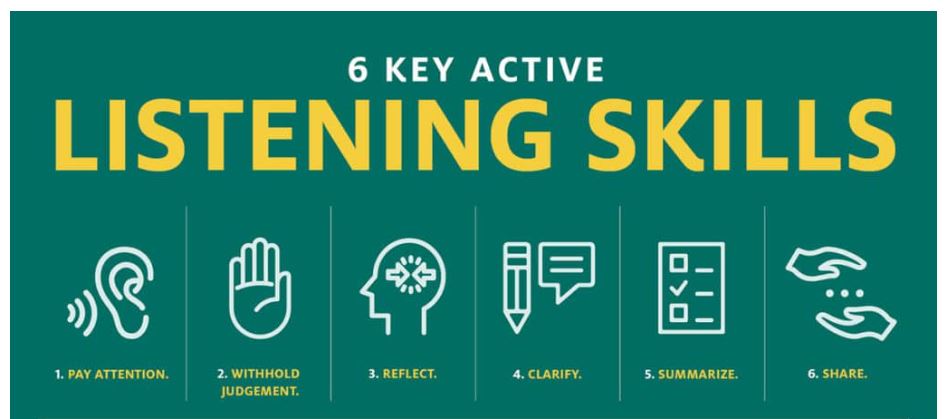
Ask open-ended followup questions for example,
- “How is the shoot working out compared to your expectations?”
- Not “Is the shoot meeting your expectations?” (close-ended)
- “What can I do on this shoot to make you more comfortable?”
- Not “Are you comfortable?” (close-ended)
- “How can I improve how I work with you?”
- Not “Is there anything I can do to improve?” (close-ended)
These are seemingly “blunt” questions, but by this stage the model and SP have not been able to communicate effectively with a less-direct approach (perhaps due to a “personality clash”, cultural reasons, the model having a reticent personality, being embarrassed, or being angry).
Discuss how this feedback will be incorporated into the shoot from now on, for example;
Let me see if I’ve got this right… some of the questions I asked you in the video component reminded you of a bad time you had with your ex boyfriend – I am so sorry about that!
I’m glad you told me, and I won’t ask any more questions about that! Do let me know if anything else comes up, I can change what we’re doing, no problem!
We discussed what our customers want from us a few times now – what is that again?
Shall we continue with the shoot?
Resume the shoot and assess how it goes. Beware of “fake happy” (where the model’s eyes do not show happiness) – it shows on camera very clearly, and is not an acceptable shoot.
Discussing a model’s poor attitude the third (and final) time
If the above approach does not get to the bottom of the issue / the model’s attitude does not improve enough to make an excellent shoot for our customers, we cancel the shoot for today, and provide context. It’s fine to read this out from this FAQ.
The model may be upset by this (or she may be relieved!), so we work to set out the facts with some empathy.
This is a difficult situation, so I am going to read from my reference guide to make sure I get it right.
We discussed earlier that our customers buy shoots from us of genuinely happy models – and I want to work with people who are really engaged in the shoot process. I am not seeing that in the media I am capturing.
We’ve discussed a few times how we can make the shoot right for you, and we’ve changed it up to suit your requests. You still look quite disengaged.
We cannot make a shoot like that, so I am stopping the shoot now. We may be able to reschedule to a different day or a different trip, but the Model Liaison will need to organise that – I’ll let them know.
I’ll discuss with the team at HQ if we can use the parts of the shoot we captured today – if we can, you’ll be paid for that part (we’ll finalise the paperwork for it remotely on our phones). If we cannot use the media, you will not be paid, and we will not use any media from this shoot at all. But, your flights and accom and transfers are still paid for.
Sorry we could not make it happen today – let’s pack up now.
We record each model’s “next of kin” when they start working with us, and models are asked to review this data before each shoot.
In the 22+ year history of the company, we have never needed to use this information (the closest we came was when scouting for locations for the River girls shoot, a Model Liaison (former model Cass) got stung on the ankle by a fucking sting ray! The pain was extreme 🤬, but we got her to hospital and they took good care of her – she was home for dinner.
Anyway, it’s appropriate to contact the model’s kin if;
- The model asks you to;
- If the model is unconscious or is in a serious accident
There are also some other scenarios that we explain to models that are unlikely for a Shoot Producer to encounter.
If the model asks you to
If the model asks you to call their next of kin – perhaps they are experiencing some kinda of personal crisis? – it’s always appropriate to do so.
If the model is unconscious, in a serious accident, of having a severe mental health crisis
The priority is the model’s health, of course, so calling an ambulance should always be the first thing to do, and caring for the model until the ambulance arrives.
In a lull, consider what the message should be to the next of kin – the facts, the current situation, what’s expected to happen in the next few hours, a commitment to keep them informed.
Call the model’s primary next of kin. If the Primary is not responsive, leave a voice message like;
Hi, this is John Jones, Jane Smith listed you as her next of kin. Please call me back on +31 6 1529 8159 as soon as you get this message, it’s quite important.
Try the Secondary if the Primary cannot be contacted. When you connect with a person, work hard to remain calm and speak slowly – they are relying on you, and will be scared when hearing your news. An example report to them might be;
Hey, is that Bob? Hi, this is John, Jane Smith listed you as her next of kin.
I was working with her on a photo shoot today when she had a fit and collapsed. She was breathing and had a pulse, but she was not conscious. I put her in the recovery position and called an ambulance, they arrived in 10 minutes and just left. They have taken her to the Westmead hospital – I am on my way there now. The Ambulance officers are concerned, but not alarmed.
I’ll call you in an hour or so, or as soon as I know more.
Note, there’s no need to mention the nature of the work (nude / adult / porn) as that’s unlikely to be relevant and may cause problems for the model.
The Shoot Producer is expected to stay with the model for the first few hours in hospital, until their next of kin can arrive (if they live in the same city), or a plan is formed with The Collective. The company will reimburse the Shoot Producer for any costs they incur.
Once the next of kin has been notified, notify The Collective with the facts directly after (more info on when to contact The Collective).
Work is always more satisfying when you can see the difference you made, and a more-engaged model is going to make a better shoot for sure (and in being so satisfied, will be more likely to refer her friends!).
Models should be asked for contributions many times throughout the shoot – at least 10, but more is better, and more “significant” things are better (not just, “Would you prefer to wear the blue socks or the red socks today?”).
At the end of a shoot day, we want models to feel like they have meaningfully contributed to the product. It’s difficult for most models to “grok” the entire abbywinters.com paradigm (though, some models simply espouse it well and may not realise, eg, Ivana, Kelli), so asking for input is often best when done with some constraints.
For example;
On the morning of their Solo shoot, Shoot Producer Bill asks Jane the model, “Hey, we need to do some movement stuff in the shoot today, what do you think we could do?”
Jane’s got this! She suggests horse riding (done it before, I’m a natural), rowing a boat (always wanted to try that!), SWIMMING!!! and tree-climbing – that sounds fun!
While all of these are nice ideas to be included in an abbywinters.com shoot, none of them are practical to be shot today (for a start, it’s snowing outside – not to mention, props and locations!).
The model is sad that all her excellent ideas are discarded, and does not suggest any other ideas for the rest of the shoot. 😕
Bill’s question to the model lacked constraints. While we’re generally in favour of open-ended questions, it is possible to be too open-ended!
Frame requests for ideas
Instead, it’s best to frame requests for ideas in practical terms, with built-in limitations. While shooting the video component Bill says;
We need to do a movement sequence now. What are some activities we could do on the sofa, that shows your full body moving?
The constraints are nominated in Bill’s request: on the sofa, and showing her full body.
Jane says, well, I could row it like a boat on the high seas? Bill agrees and Jane acts out a scene of a rowboat in a storm, throwing in orders to other crew members and being battered around by the rough waves – it’s a great MMaiA sequence, especially when Bill suggests she “rescues” a man overboard (ie, on the floor). Jane improvises by throwing a cushion as a life ring, causing her to laugh uncontrollably at this “serious” juxtaposition.
It’s a great collaboration, because the ideas come from both sides, they’re on-paradigm (in this case, involve the model moving her full body), it’s funny, and the model’s visibly having fun (and so is the Shoot Producer!). No special location or props are required, either.
The model feels like she made a meaningful contribution to the shoot (her idea was used, and even expanded upon), which encourages her to make other suggestions in the future. And, we got some great content for the site.
By constraining the model to the sofa, we focus the model’s ideas so they are more likely to be practical.
Rejecting unsuitable ideas
Sometimes, models will suggest ideas that are impractical or off-paradigm, despite being allocated constraints. Some considerations when addressing these;
- Show respect by a willingness to listen, before discarding the idea
- Pause and consider the idea in the context of the abbywinters.com Paradigm – unusual is good if it’s on-paradigm!
- Discuss how we could make changes so the idea works (instead of a “hard no”)
-
Consider how you can help the model can “save face”
- She’s “gone out on a limb” by offering her amateur idea to an expert, and is somewhat vulnerable anyway because of the nature of the work.
- Nominate the constraints that make the idea unworkable, thus encouraging the model to consider those constraints for the next idea they offer
- Consider trying the idea for a short amount of time anyway, if time allows
- Incorporate aspects of the model’s idea in one of the upcoming shoot sequences
Dealing with models who prefer not to be involved
We set the expectation with all models that their input on shoots is desired, explaining how it will make the shoot more interesting for them, and make a better shoot for us.
But, some models prefer not to be involved in this way – they see it as the Shoot Producer’s job to come up with ideas for the shoot.
Models should never be forced or “over encouraged” to contribute if they choose not to.
It’s never appropriate to share personal details (for example, real full names, addresses, email address, phone number, social media handles) about models (or anyone, without their permission).
It is never appropriate to comment on other models’ negative aspects, even if it’s in an effort to make today’s model feel good, and even if the model is not identified. For example;
❌ I’m so glad you’re flexible, yesterday’s model was so inflexible it really made my life hard
❌ I love how positive you are, yesterday’s model complained about everything – the temperature – the food – the poses
❌ I love how neat your labia is – you should have seen what I shot yesterday – eww!
(btw, it’s never appropriate to comment on a model’s physical attributes like this, positive or negative)
Apart from being disempowering to both models and the SP, the SP is also being a “downer”, and no one wants a downer on a shoot day!
It is appropriate to share positive details about models in the abstract form, for example;
✔️ I worked with a model last week who showed me the most amazing trick with an egg whisk…
✔️ The model yesterday was so fit, it was hard to keep up with her (but we managed)
✔️ The other day a model taught me how “the kids” talk these days – I learned what “thicc” means!
It is appropriate to share published details about other models, using their site name, for example;
✔️ Hayley F on the abbywinters.com site also collects D&D figurines, you should check out her shoot!
✔️ Angela P showed me how to shear a sheep on a shoot the other day – it’s hilarious!
See how we present peeing on-camera to models (most models will not have read to this level of detail, however).
Peeing on camera is viewed in a range of ways by a model, on a spectrum;
That’s gross – no!
Hm, interesting. Maybe…
I’m ok with that
There’s no way to tell how a model will react to such a question, so we just need to ask in a respectful and non-threatening way way, for example;
Some of our customers enjoy seeing a model pee. How do you feel about doing that today? It’s not required!
Some models love the feeling of freedom; for some it’s sexualised, for others it’s just a “natural thing to do” . Some models will be motivated purely by money (we do not pay extra, as we do not want models to pee on-camera only because they are being paid).
If the model indicates she’s not interested, reassure the model that’s completely fine, and continue on with the shoot. Do not ask the model again.
If the model equivocates, suggest that you’ll bring it up again later in the shoot, but there’s no requirement to do it.
If the model wants more info, here are the facts to share;
- You don’t get paid extra for it
- It probably won’t be on a toilet – we’ll figure out a more unusual place
- We’d like to shoot it several times over the course of the day
- You’ll drink extra water so there’s plenty of pee to capture
- I’ll shoot it for wide shots and CU shots – you’ll need to stop-start a few times, so I can reposition the camera
- Ideally, we’ll shoot it for stills and for video, but no pressure, we’ll just see how that goes
- If you’re up for it, we might try some unusual poses for peeing, too?
- We’ll clean it up together
If the model definitely is interested after this briefing, review the Pee item in Fetish Finder for the details on how best to prepare and capture it.
